Why the US hasn’t adopted this gun that shoots around corners
- By Travis Pike
Share This Article
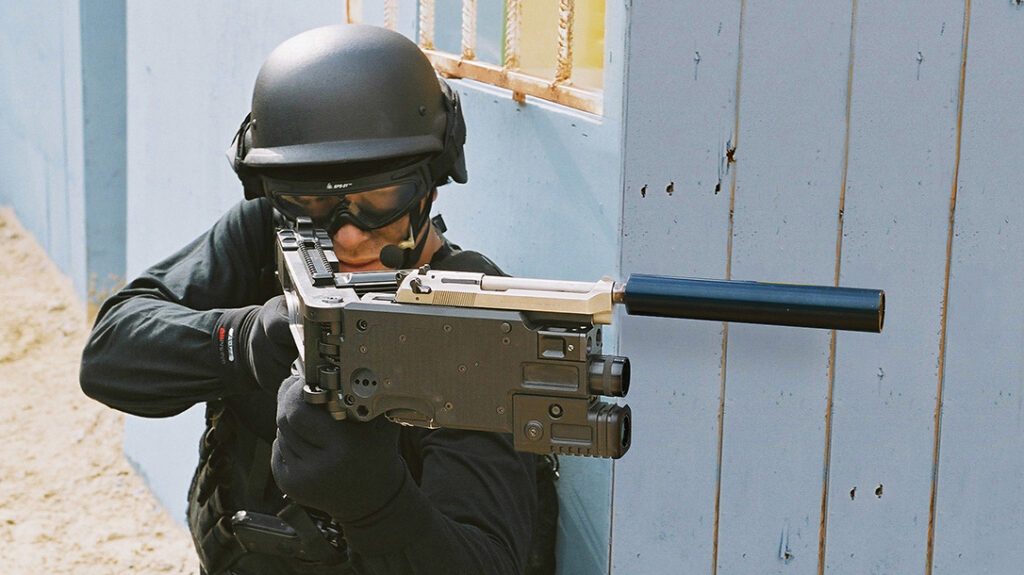
One of the more interesting weapons to pop up in the Global War on Terror is the CornerShot. The CornerShot comes from the mind of Israeli Defence Force Lt.Col Amos Goran. The idea was simple; give police and military units a specialized tool that allows them to safely see and engage a threat around corners without exposing the operator.
It’s an advanced camera-equipped tool that combines all the latest and greatest tech to solve an age-old problem. It’s also been around since at least 2003 and hasn’t seen a crazy amount of use in the United States. Today we are going to cover the ins and outs of the CornerShot as well as why it hasn’t found its way into Uncle Sam’s armory.
How the CornerShot works
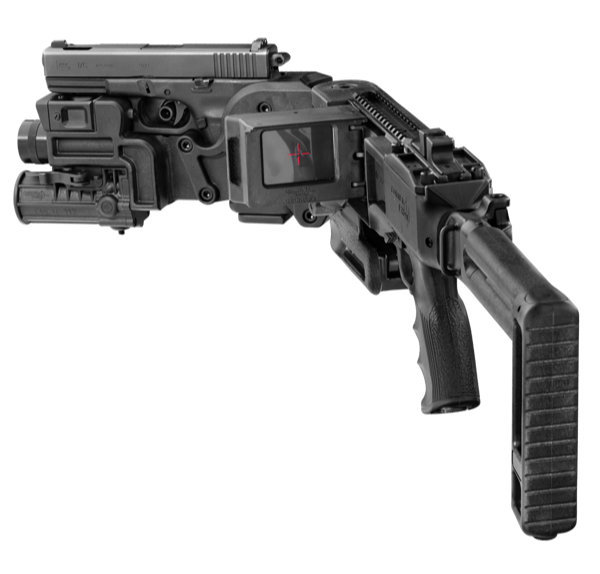
The CornerShot isn’t a weapon per se. Instead, you place a weapon inside its specialized frame. The CornerShot is a rifle-sized platform with a stock and a hinging front portion. The hinged front portion uses a clamp that houses a weapon. The most common variant utilizes a handgun placed in this hinging clamp.
You lock the handgun inside the clamp, and a trigger linkage goes from the weapon’s trigger to a trigger installed on the CornerShot platform (right where you’d usually hold it if it were a rifle).
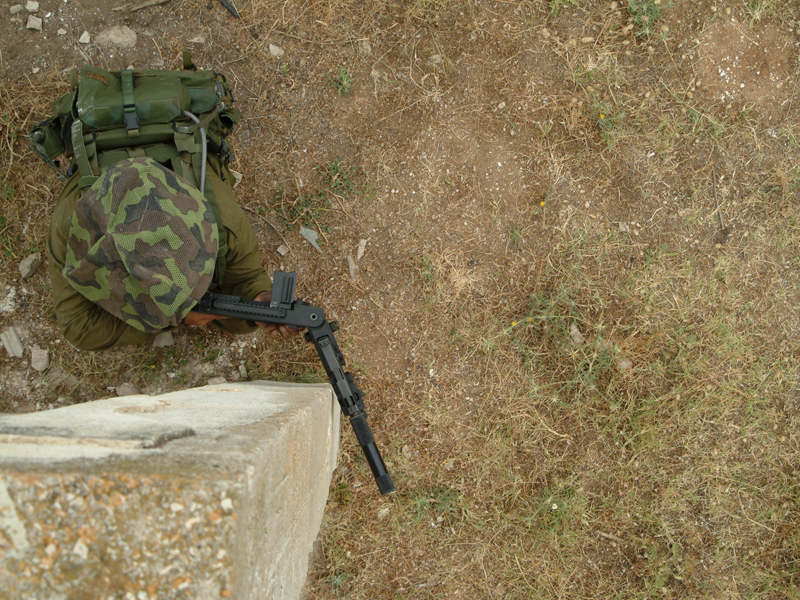
To allow the operator to see around the corner, a camera mounted past the hinge feeds back to a small screen in the operator’s line of sight. This allows the operator to see around the corner and aim the weapon while remaining safely behind cover.
A set of crosshairs sits on the camera feed, and I’d assume the user can zero the camera to the weapon’s point of impact. The hinging clamp can swing to either side at a variety of angles, allowing the user to peek around corners or over cover in a variety of situations.
Related: The Army just tested new night vision and optics that can shoot around corners
Using the CornerShot operationally
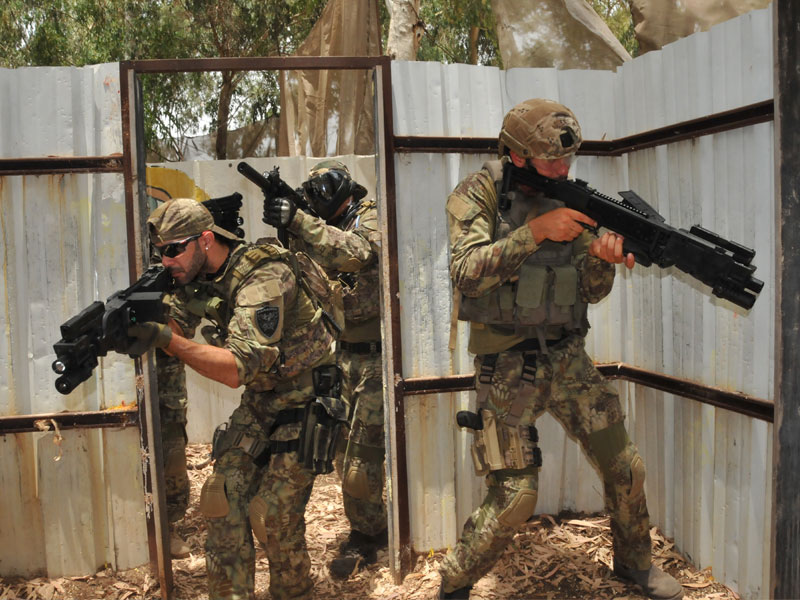
The CornerShot can be equipped with a wide variety of firearms, specifically a variety of handguns. This includes favorites like the Beretta 92, the Browning Hi-Power, the Glock series of pistols, the SIG P series, and more. The CornerShot can also work with extremely short AK and AR variants—sans stock.
Users can even equip the CornerShot with a 40mm launcher. 40mm launchers can toss grenades, but also less-lethal rounds, door breaching munitions, and a variety of other unique choices.
At first glance, the CornerShot seems like a weapon-only affair, but its creators made it a handy observation platform as well. The CornerShot equipped with a bipod allows for an operator to set the tool down and observe and listen. Its cameras allow you to zoom in and observe from various angles. A video out port allows for remote viewing, and an optional microphone allows the user to see and hear what’s going on around the corner.
It’s a versatile tool that can be used in a variety of situations.
Related: A farewell to the M9: Why Marines will miss the Beretta
But its also got some issues…
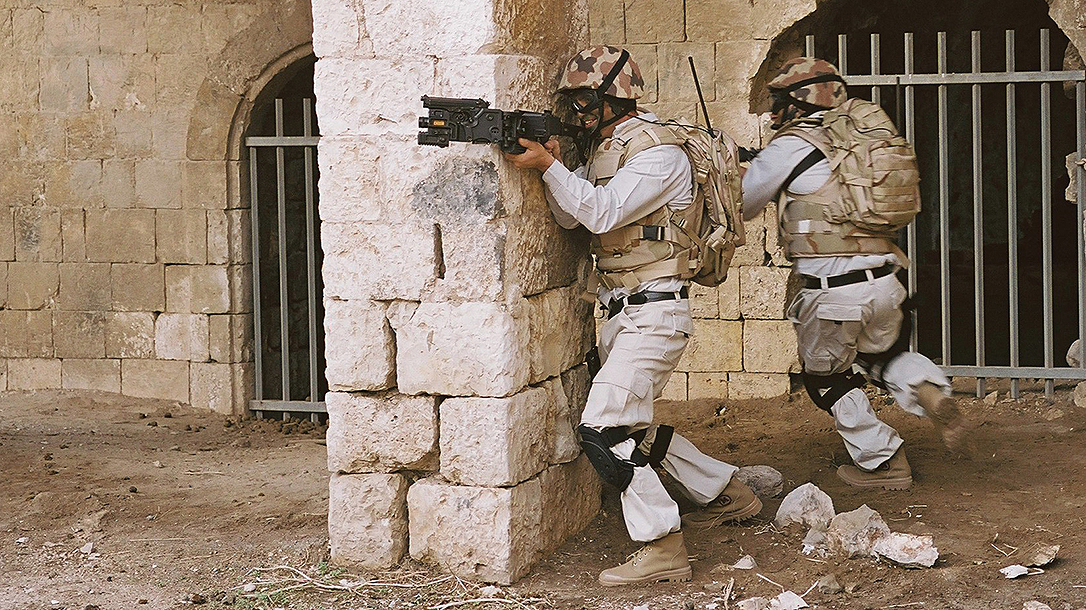
Well, the biggest issue with the CornerShot has to be the fact that it’s a rifle-sized tool that doesn’t offer rifle-sized capability. Even with a short AR or AK, you don’t have the same ballistic capabilities offered by dedicated rifles. Also, you can’t use the same magnified optics a rifle could, limiting the effective range of the weapon.
In fact, with a short AR or AK, you get a weapon much longer than a standard carbine that’s also unbalanced and hefty. It’s really only super useful when used to fire around corners and otherwise would mostly just get in the user’s way. The situations in which the CornerShot would be required are few and far between.

Related: Quiet Special Purpose Revolver: The tunnel rat’s lost sidearm
Also, aiming through a small camera screen can be tough. You always have to be absolutely sure of your target before your fire, and that’s tough to do if you’re looking through a tiny screen attached to a firearm on the other side of an awkward lever. Push your phone around a corner and try to see something clearly enough to have the confidence you’d need to shoot it. It’s a tricky proposition.
Throughout the past 20 years of the Global War on Terror, we’ve developed some very strong close-quarters battle tactics. This includes tactics used to take corners safely and effectively with standard tools. At times where a corner is so unsafe that you can’t use proven and effective tactics, then maybe you take a different route or employ different tools already at your disposal.
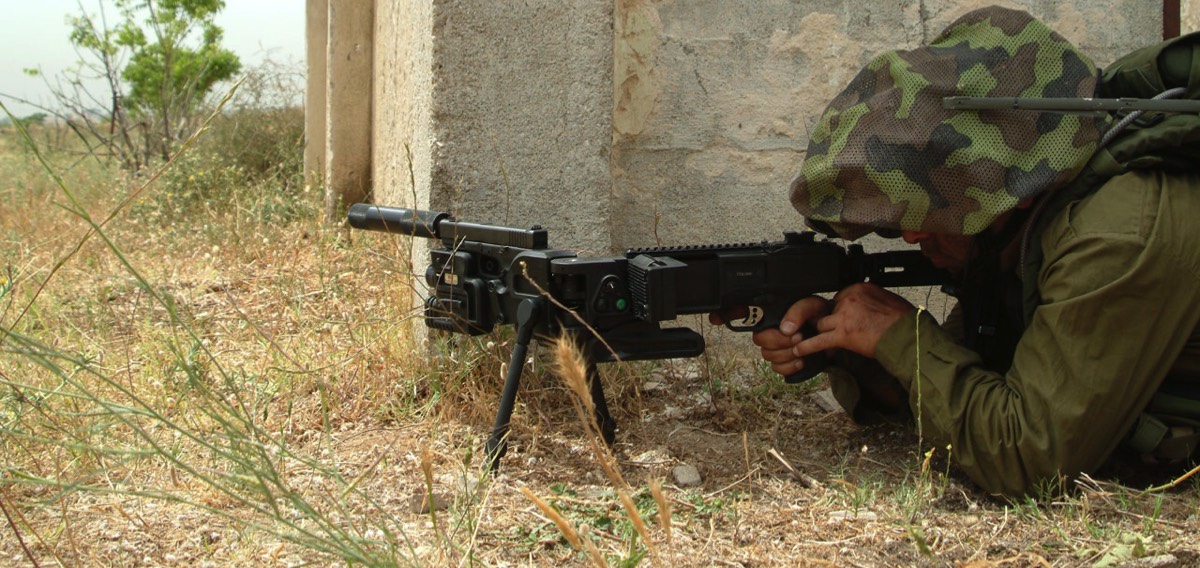
Related: The underwater firearms used by the world’s combat frogmen
With the advent of small drones and UAVs at the squad level, the modern ability to snoop around corners is unmatched in any other era. To put a fine point on it: if you need an organic piece of gear to peek around corners, then there are better options.
Aimpoint makes a simple device that attaches behind a red dot and acts as a periscope called the Concealed Engagement Unit. It’s a bit simpler, much easier to use and definitely beats carrying a dedicated CornerShot frame around just in case you need it.
Oh… and let’s not forget about the batteries
Oh, and it requires batteries. Batteries aren’t a bad thing, but a 160-minute runtime for the camera doesn’t inspire confidence for the grunt on the ground headed out for a 12-hour patrol. Law Enforcement can make use of the tool, but again, it’s an expensive solution to a problem we already have tactics designed to solve. I think the CornerShot is a neat idea, but it’s tough to justify in the face of other options, superior tactics, and the likelihood of a niche situation that might warrant it.
(That doesn’t mean I totally wouldn’t plink with it and have a blast though.)
Read more from Sandboxx News
- The Army just tested new night vision and optics that can shoot around corners
- The 5.11 Operator Axe – Designed by Delta
- The SOG Baton – A Pocket-Sized Revolution
- Special Tactics Humanitarians: Elite Air Force units in Central America
- Air Force honors heroic Special Tactics officer Captain Matthew Roland
Related Posts
Sandboxx News Merch
-

‘AirPower’ Classic Hoodie
$46.00 – $48.00 Select options This product has multiple variants. The options may be chosen on the product page -

‘Sandboxx News’ Trucker Cap
$27.00 Select options This product has multiple variants. The options may be chosen on the product page -

F-35 ‘Lightning’ Framed Poster
$45.00 – $111.00 Select options This product has multiple variants. The options may be chosen on the product page

Travis Pike
Travis Pike is a former Marine Machine gunner who served with 2nd Bn 2nd Marines for 5 years. He deployed in 2009 to Afghanistan and again in 2011 with the 22nd MEU(SOC) during a record-setting 11 months at sea. He’s trained with the Romanian Army, the Spanish Marines, the Emirate Marines, and the Afghan National Army. He serves as an NRA certified pistol instructor and teaches concealed carry classes.
Related to: Gear & Tech
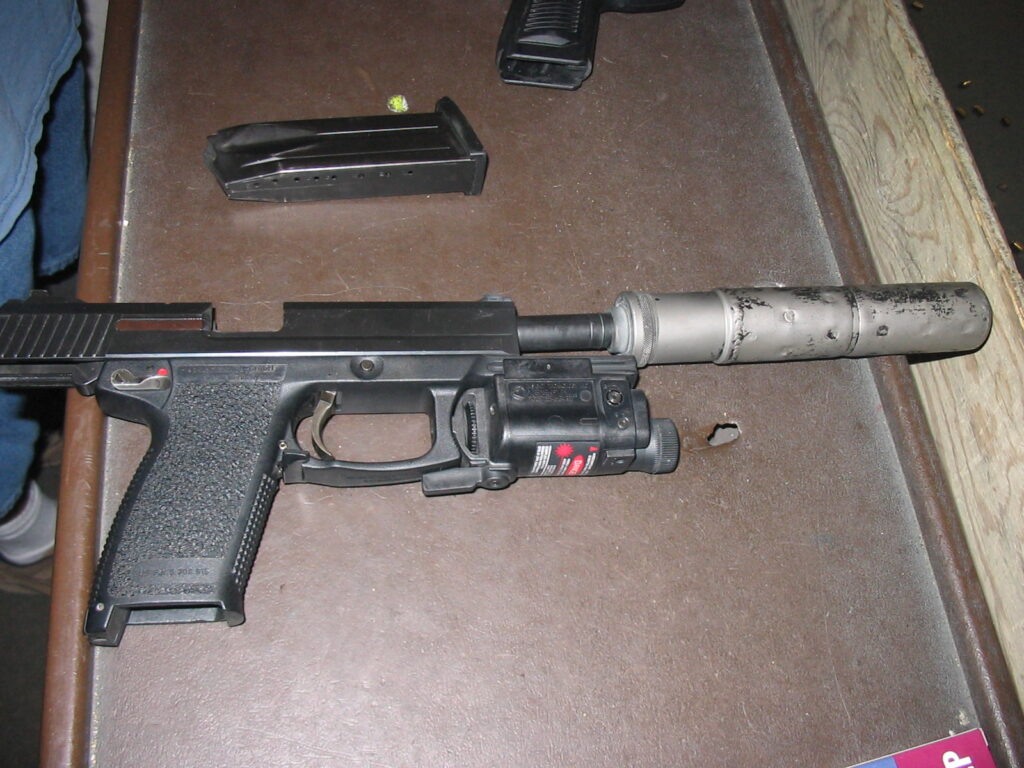
The HK MK23 built for SOCOM was the first and last offensive handgun
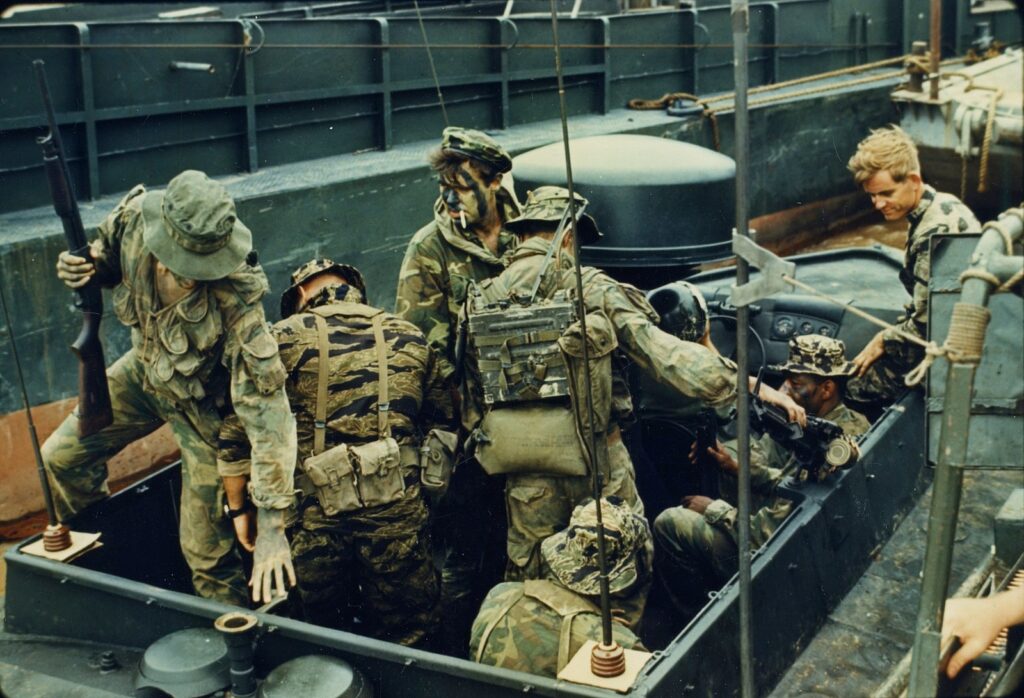
The slick custom shotgun carried by a Navy SEAL point man in Vietnam
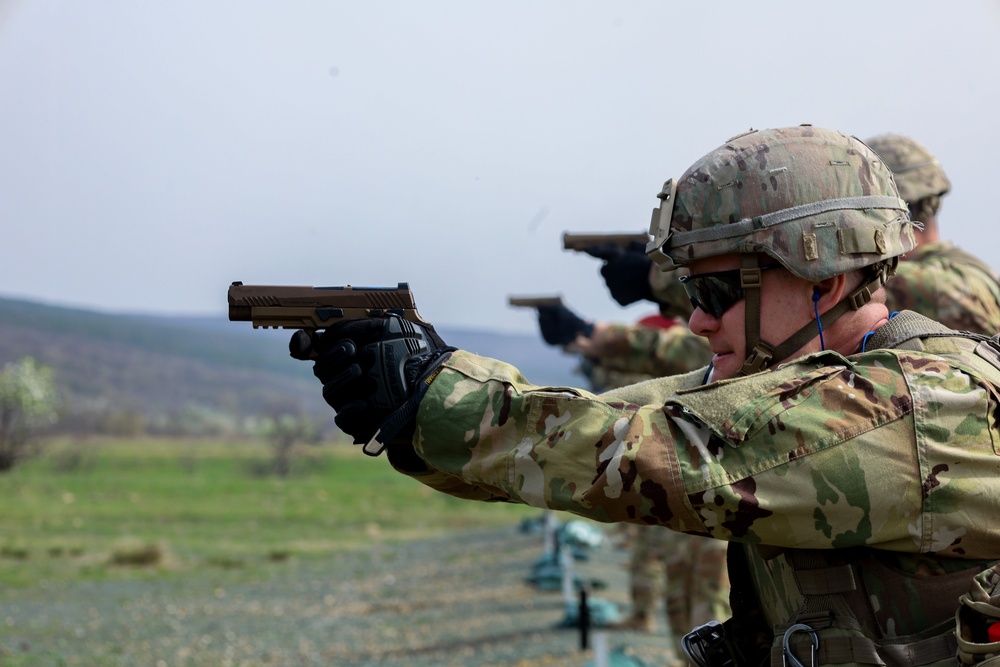
Are the Army’s old Beretta M9 and new SIG M17 pistols as similar as people think?

The Switchblade, loitering munitions, and the new terrifying face of warfare
Sandboxx News
-

‘Sandboxx News’ Trucker Cap
$27.00 Select options This product has multiple variants. The options may be chosen on the product page -

‘AirPower’ Classic Hoodie
$46.00 – $48.00 Select options This product has multiple variants. The options may be chosen on the product page -

‘AirPower’ Golf Rope Hat
$31.00 Select options This product has multiple variants. The options may be chosen on the product page -

‘Sandboxx News’ Dad Hat
$27.00 Select options This product has multiple variants. The options may be chosen on the product page
